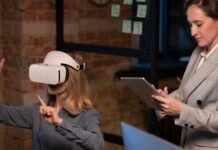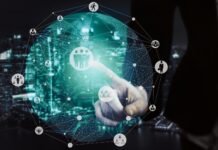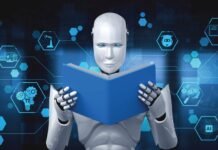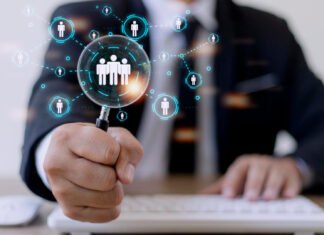Employee Experience has witnessed a major shift in the recent times, due to technical advancements as well as the technological barriers to streamlined workflows.
When employers are quizzed about their ways of enhancing employee experience the options are mostly heard are medical assistance, infrastructure, employee-centric policies, etc. But seldom will you find them talking about the digital facilitation and digital literacy of the organization. And while the reason for that is quite simple, it is a little unacceptable. It is because digital experience is not considered a part of employee experience by many enterprises and their leaders even today.
Whenever the management sits down to decide upon the next strategies and objectives to integrate in the organization, each department leader is given a specific set of areas and pain points to cover. And, as the job profile would have it, HR leaders are given the responsibility to refine employee experience, leaving behind the digital aspect of it.
Now, organizations that have collegiality amongst their teams, are the organizations that succeed in delivering an exceptional digital employee experience. But, companies that consider IT or HR as solo performers, often end up with dissatisfied employees.
It is not solely up to the HR leaders to theorize and then practicalize the element of digital employee experience in the organization, IT leaders too play a major role in it.
But IT leaders tend to lag in playing an active role in the same.
It is high time that this gap gets filled and real digital experience gets woven into the core objectives of not just HR, but also IT teams.
But, what exactly is digital employee experience?
So,
the digital employee experience will tell you that it is the interaction that employees have with the tools and solutions in a workplace.
But, if we look closely, it is also the flexibility to transition to workflows without the interruption or roadblocks of long IT procedures.
It is only now that this definition has expanded because of the shift to remote work and hybrid work models.
These newer models have had HR teams ask IT teams questions such as –
– How soon can the remote work set up be done for the employees?
– Do we have enough software and hardware to facilitate WFH for all the employees?
– How can we manage the setup for employees that are in different companies?
– Do we have access to adequate tools that will allow work to be done in a regular fashion?
– What do we do when there are outages?
– How can employees collaborate with utmost security?
– Are we facilitating digital literacy for newer solutions?
– Are we equipped to let employees work from different systems in case of any device breakdowns?
– How can we make it simpler for employees to utilize the applications they need without needing to go through hierarchies of permissions?
– Does this ease of use come with proper authentication?
– What is our upcoming strategy to enhance digital experience and not just digital access?
These questions have now become pertinent because for the longest time IT goals did not include employee experience. But things have finally begin to take a turn for good with the newly evolved IT Leaders goalset entailing the following: –
– Seamless Transition to Cloud
– Prioritize relevance in terms of Data Storage and Collection
– Network Modifications
– AI, ML, NLP Integration
– Digital Infrastructure Renovation
– Low-code development facility
– Employee-centricity for All of the Above
Now the bigger question is :How can IT leaders incorporate digital employee experience management swiftly to their strategies?
We have enlisted our Top 4 Ways to make this switch happen in a larger yet optimized fashion:
1) Talk to the workforce
Yes, that’s right! The first and the most important thing to do is to talk to the employees and the HR teams. What is the experience of the employees with the digital infrastructure and tools, can come no better from anyone, except for the employees. And, since HR teams are generally supposed to take consistent feedback from the workforce, it only makes sense to have a conversation with the HR team and leaders. They are probably using advanced analytics to identify any gaps in the system and opportunities to elevate the experience.
So, you can either take direct feedback from the workforce about their current experience and their expected experience, or you can take help from the HR leader and leverage their experience analysis to decide upon your curated strategy.
2) Develop your roadmap
Delivering the best digital employee experience is not the same as onboarding new tools and solutions to the company’s ecosystem. There’s a lot that goes on BTS and a lot that has to be taken care of in terms of the comfort, compatibility, and necessity of the employees. And for that you will need a dedicated roadmap or a blueprint so as to dissect how you will be making the goal achievable.
This roadmap will contain steps and procedures, along with implementations and technical reformations, but more than anything else it will need to contain flexibility. DEX is an on-going process, sure, but it is also extremely dynamic. So make sure to let employees give their inputs and accordingly alter your strategy, every step of the way.
3) Ensure Seamless Connection
Connection doesn’t only mean a stable network and a platform to communicate on. A seamless connection also pertains to the ability for the employees to be able to switch between devices, over the same network. It also means that the employees are able to connect to the resources available and the resources desired without much hindrance and all security.
IT teams do get a lot of tickets about the systems crashing, not having access, needing a ton of permissions, solutions not being compatible with the devices, etc. and a seamless connection that decomplexifies such issues is what the employees need for an enhanced experience.
4) Right to Disconnect
Well, this one is not just for the IT leaders, it is for all the leaders in general. Employees spend a lot of their time working for your organization, and most of it is spent with digital infrastructures, tools, and devices. Spending so much time in a digital ecosystem can be draining for anybody. And since we spoke about seamless connection, it is also important to bring to attention – the right to disconnect.
Any experience is only delightful, as long as it is desired. Once the employees finish off their work, and logout from their systems, they have the right to disconnect from work. This means, no work emails, calls, or messages, once employees log off.
To contribute to this, IT leaders can innovate and bring in systems that allow employees to notify everybody in the firm that they have logged off and will be inactive until their next login. An activity switch tab would also help teammates get visibility of their co-workers connectivity status.
RoundUp
Digital Employee Experience Management is a competitive advantage for organizations that get it right. And, for organizations that don’t, now is the time when they need to get their IT leaders onboard with an interactive and diligent plan to optimize the experience that their employees have when they interact with the digital environment and assets of the company. The projection of growth lies not just on technical advancement, but also on technical deployment. So, have your IT and HR teams collaborate on refining the DEX of your organization, today!
For more such Updates Log on to www.hrtechcube.com
ABOUT THE AUTHOR


Aashish Yadav
Content Writer, HRTech Cube
Aashish is currently a Content writer at Martech Cube. He is an enthusiastic and avid writer. His key region of interests include covering different aspects of technology and mixing them up with layman ideologies to pan out an interesting take. His main area of interests range from medical journals to marketing arena.












